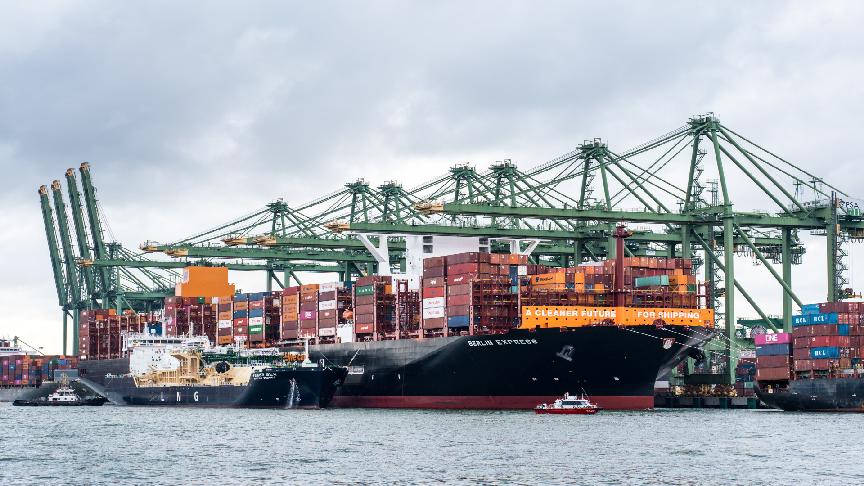24 September 2024 (Lloyd's List) - CONGESTION at global container ports has been pushed to record heights, impacted by recent typhoon-related disruptions at Chinese gateway hubs.
More than 3m teu of vessels waited at anchorages worldwide as of September 23, accounting for 9.9% of the global fleet. This is the highest level outside the Covid pandemic era, according to data from Linerlytica.
“The surge is driven mainly by very high levels of vessel bunching at the ports of Shanghai and Ningbo in the aftermath of Typhoon Bebinca, which has also spilled over to other downstream ports in Asia,” said the research firm in its new weekly report.
The two eastern Chinese ports — the world’s largest and third-largest, respectively, by container throughput volumes — were struck last week by Bebinca, the strongest storm to hit the region since 1949.
This was followed several days later by the relatively weaker Tropical Storm Prasan.
Terminal operations were suspended in response to the adverse weather conditions.
Hapag-Lloyd had reported early last week that ships were facing delays of 36-60 hours to berth in Shanghai, while Ningbo faced waiting times of 24-48 hours.
However, a manager at Shanghai’s Yangshan deepwater port, which mainly handles large long-haul vessels, said the situation has eased, with waiting times reduced to around 24 hours.
“To alleviate congestion, different terminal operators at Yangshan have started sharing their available berths, which is not normally allowed,” the manager said. “But there are still many ships.”
Elsewhere, congestion continues to affect ports in Latin America, where waiting times of up to five days have been recorded at gateways in Mexico, Brazil and several Caribbean countries, according to Linerlytica.
But the research firm said no serious bottlenecks are evident as yet on the US west coast. This is despite rising handling volumes and trade shifted from the US east coast as concerns over a massive port strike mount.
The ports of Los Angeles and Long Beach saw combined container throughput of well over 1.8m teu in August — just shy of the more than 1.9m teu peak seen in May 2021 during the pandemic.
However, this was much higher than the almost 1.7m teu handled in January 2022, when congestion at the San Pedro Bay gateways reached a record high of 740,000 teu.
“The situation could change if additional cargo is shifted from the US east coast over the coming weeks with the imminent ILA strike at the east coast and Gulf coast ports that is due to start on October 1, 2024,” said Linerlytica.
Carriers have started planning ahead for the possible shutdown of port operations due to the dockworker downing tools.
Hapag-Lloyd announced on Monday that it will levy a $1,000 per teu ‘Work Interruption Destination’ surcharge on imports from East Asia to the US east and Gulf coasts, beginning October 19.
Online container marketplace xChange said its surveys indicate demand on the China-US route remains robust, even with the approaching Chinese Golden Week holiday that normally slows logistics activities nationwide.
“With these events in combination — the US labour strikes, upcoming Golden Week, and port suspensions — the China-US shipping route is set to be volatile and uncertain over the next 20 days,” it said.
Nevertheless, the rising congestion has so far failed to halt the ongoing slide in ocean rates. Rate erosion has, though, been moderate compared to previous weeks, as per freight indices from the Shanghai Shipping Exchange and Drewry.
Linerlytica expects further weakness in the coming week on the Asia-Europe trades, with carriers reluctant to remove capacity ahead of alliance reshuffling next February and the Golden Week blank sailings insufficient to stop falls in rates.
On transpacific routes, where rate prospects will be heavily impacted by the port strike outcome, more tonnage has been introduced by new players entering the trade.
“There is limited congestion at the ports of Los Angeles and Long Beach, but this could start to escalate in the coming weeks if the diversions from the east coast intensify,” Linerlytica added.







